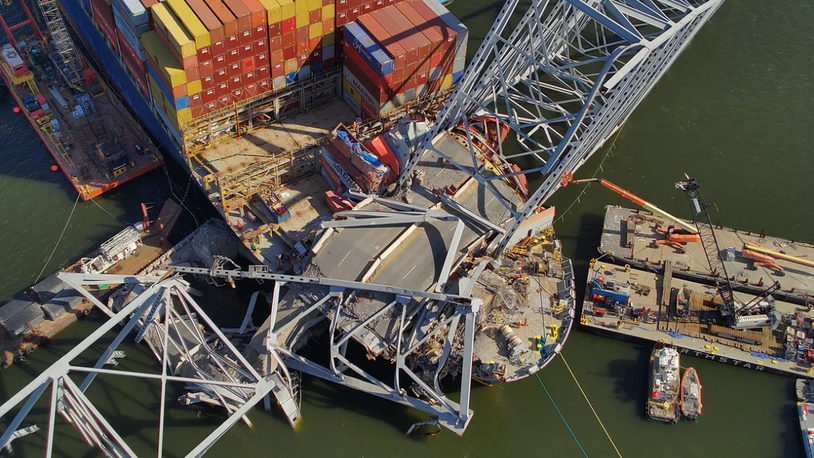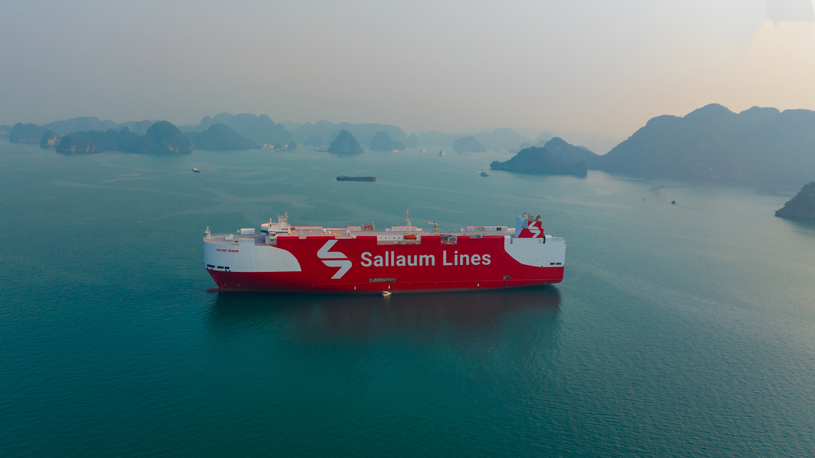Business Sectors
Events
Contents
Silversea serves up ambitious WiFi upgrade
Silversea Cruises, which trades in the luxury segment, is significantly upgrading the WiFi networks throughout its fleet of ships to provide continuous connectivity to passengers and crew, with fast broadband Internet and satellite links to cover all its customer requirements. Jason Cohn, IT shipboard infrastructure manager, says Silversea’s mission is always about delivering the best product at sea. In pursuit of this, the company has tapped upon the expertise of MTN Satellite Communications to upgrade and expand WiFi on its two signature vessels, Silver Wind and the flagship, Silver Spirit.
The upgrade has allowed both passengers and crew to access high-quality wireless Internet connections throughout the ships, enabling them to send and receive e-mails, follow their favourite websites and update their social media pages. Mr Cohn says this project involved a true change of approach, contrary to what has emerged as an industry standard among other cruise lines.
These days, wireless connectivity is emerging as a core expectation for cruise ship guests. “This is the world in which we live,” Mr Cohn explains. “It is no different from expecting a dial tone on a telephone when it is picked up, or for a television to power up with a picture.
“On high-end product lines, wireless connectivity is especially valued because passengers are sailing farther from home, to exotic places. This makes it all the more critical to enable these customers to stay in touch,” Mr Cohn adds. “If someone has booked a 900ft2 suite that epitomises luxury they do not want to spend the afternoon in the Internet café instead.”
The technical installation for this project required a complete revision of past efforts at creating a wireless network within cruise ships. For practical reasons, the original WiFi distribution on these vessels was deployed as an add-on to the cellular infrastructure, taking advantage of its distributed antenna system. A although this approach was good in theory, cellular and wireless are very different. This is because cellular has a substantially different propagation characteristic, translating to less dense antenna placement covering more area.
Silversea experienced some other engineering challenges with this method and ultimately – through months of collaboration with third-party engineers at RedCell Technologies and its partnership with MTN – the company began to re-engineer the deployment. In this way it could ensure stable and prolific coverage throughout each vessel, rather than following what has become the industry standard of creating dense and imperfect deployments. By respecting the true propagation characteristics, Silversea was able to keep the density, or access point count, very reasonable, and this kept the costs of redeployment down.
MTN provides a wide range of communication and IT services for passengers and crew on the Silversea cruise ships, including MTN Worldwide TV, which delivers live television programmes from major international news and entertainment channels. The new WiFi enhancement networks allow for ship-wide, high-speed wireless Internet connectivity, including in passenger cabins, public spaces, outside decks and the pool area, along with the crew quarters.
The systems harness MTN’s worldwide broadband satellite network for high-speed data links between ship and shore, and incorporate distributed-network technology from Aruba Networks, with technical installation support by HMS Inc’s Miami subsidiary, a leader in VSAT satellite communications systems.
“In the bigger-picture sense, we are taking the lead in bringing state-of-the-art broadband WiFi connectivity to the cruise industry,” says Brent Horwitz, senior vice president of MTN’s cruise and ferry services. “As the pioneer of cruise-ship VSAT communications, we are now meeting the ever-increasing use of mobile devices and demand for always-on Internet access at sea. We now support WiFi networks and Internet cafés on more than 165 cruise ships worldwide.”
Fabio Agostini, Silversea’s chief information officer, is responsible for managing all IT systems and understands the importance of delivering flawless capabilities for clients. Thanks to Mr Agostini’s expertise, Silversea is equipped with the latest IT solutions and services, which result in clients managing all communications as if they were at home or in their office.
“Onboard services are critical to the successful delivery of the finest product at sea,” Mr Agostini says. “Technology is a key enabler for these services, and technology mainly means connectivity. Our guests are used to being constantly connected to the world and expect that same experience on board. WiFi coverage, premium connectivity speeds to the Internet and innovative service programmes can contribute greatly to the overall experience of a Silversea cruise.”
MTN worked closely with HMS, a systems integrator, which played a significant role in the Silversea project, because the subcontractor specialises in cruise ship deployments. With offices in Italy, France, Finland, and the US, HMS provides turnkey systems installation and services while ships are under construction and throughout their life, anywhere in the world.
The director of engineering at HMS Miami, Frederic Billardon, says that deploying such robust, high performance, ship-wide WiFi networks presents special challenges: ships’ dense metal infrastructure affects radio-frequency (RF) propagation in complex ways and makes RF propagation analysis extremely difficult. Onboard deployment requires constant RF surveying and adjustments for quality coverage. Skill and experience are keys to balancing ideal access point (AP) placements with the availability of cables.
Unlike regular APs, the antenna devices are slave APs (or thin APs), entirely managed by the central controller, instead of being controlled locally. This technology is particularly suited for large deployments of devices such as those required for wireless networks.
“We managed to overcome the technical hurdles and create a ‘bullet-proof’ network solution using advanced RF engineering and supplying Aruba Networks’ thin access point technology,” Mr Billardon says. “This technology consists of centralising the wireless-structure management in a device with a high level of processing capacity.”
Currently, Silversea has plans to deploy similar systems on three more vessels in its fleet by the end of 2011. It is now in pre-engineering phases for Silver Shadow and Silver Whisper, and intends to have each of these vessels, as well as Prince Albert II, completed by the end of 2011. The projects’ success – as measured by customer-satisfaction and feedback – is fueling the drive for this expansion, says Mr Cohn.
Any aspect in which the guest experience can be improved is seen by Silversea as a decent return on investment. While this may not result in spikes of a particular revenue that mass-market vessels may see, it will materialise in the form of continued customer loyalty as passengers choose to sail with Silversea year-after-year, instead of booking with rival companies.
“The feedback we are receiving from passengers, crew and corporate travellers on Silver Wind and Silver Spirit since this redeployment has been astoundingly positive,” Mr Cohn says. “It is rare in this field to accomplish something so unequivocally right, especially when we were fighting what had become an industry standard and basic deployment architecture.”
Another important benefit is employee morale. Crew members work long shifts on board, away from their loved ones for extended periods, and require stable and reliable communications with family and friends as part of their welfare. Silversea strives to keep them happy by enhancing the way they can connect through Internet, e-mails and voice calls.
“Our crews work their tails off to deliver this type of product, to meet every desire of our guests above and beyond the call of duty,” Mr Cohn explains. “It is imperative for them to be able to keep in touch with wives and children. This translates directly into each service they provide and every smile or kind word they offer to our guests. Now that is a return on investment.”
Silversea is offering its guests large ship amenities aboard, all-suite vessels with itineraries covering all seven continents. Condé Nast Traveler readers in the US have voted Silversea as the world’s best cruise company nine times. In 2008, high-net-worth consumers in the luxury brand status index rated Silversea as the top luxury cruise line, partially due to its investment in technologies, such as wireless broadband.
The World installs SnapTV for global viewing
SnapTV has supplied a complete information entertainment system to the only cruise ship with a residential community at sea, The World. The turnkey IP-based solution will provide residents, guests and staff with web browsing, TV and video on demand (VOD). The World, a 195m long, 12 deck vessel managed by ResidenSea, is owned by its residents, who hail from over 40 countries community at sea, The World, Clare Nicholls writes.
SnapTV’s system provides real-time messaging, ship information and on-demand films to residents and staff. It enables those on board to watch a large number of global television channels, including the choice of local language TV. The World’s TV service provides staff and crew information, training and health and safety videos. “We chose SnapTV for the Internet Protocol (IP) TV distribution technology, the comprehensive system and superior product quality,” says ResidenSea’s chief financial officer, Patrick Webster.
ResidenSea has been able to install an IP TV package at much lower cost and without the complexity of connecting to independent TV systems, claims SnapTV’s senior vice president of sales and marketing, Mikael Osen. “The main unit is our gateway but the strength of the system is that it is a complete solution,” he explains. “Rather than the system integrator or end customer shopping around for elements of an IP TV system, we have developed a full end-to-end solution comprising VOD, recording, live TV and radio, middleware, descrambling, tuning, content management, user management and more.”
Any channels can be received but the administrator can set different access levels for different users, Mr Osen adds. “So, if the captain would like to have access to all CCTV cameras and all TV channels, while the crew only have limited access to certain TV channels, we can accommodate that. Also, messaging is part of the system and can be sent to one individual or to groups of users.”
The administrator has the choice of TV content, which Internet provider to use and whether the service is maintained remotely or on board. There are also options to use touch screens or TV remote controls. MEC
Related to this Story
Events
Maritime Environmental Protection Webinar Week
Cyber & Vessel Security Webinar Week
The illusion of safety: what we're getting wrong about crews, tech, and fatigue
Responsible Ship Recycling Forum 2025
© 2024 Riviera Maritime Media Ltd.













